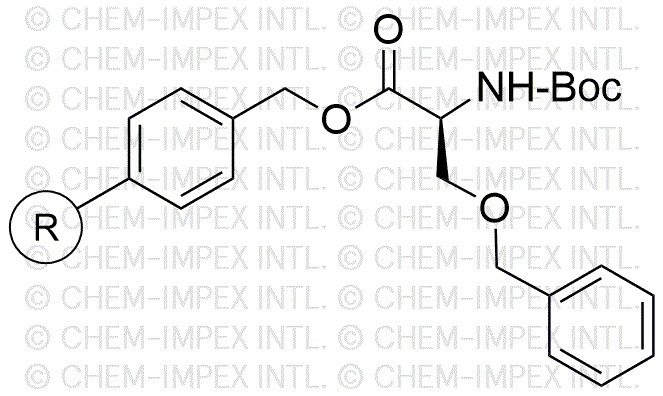Boc-O-benzyl-L-serine Merrifield is widely utilized in research focused on
- Peptide Synthesis: This compound serves as an important building block in the synthesis of peptides, allowing researchers to create complex structures for drug development and biological studies.
- Drug Design: It is used in the design of novel therapeutic agents, particularly in the field of cancer research, where modifications to amino acids can lead to more effective treatments.
- Bioconjugation: The compound is valuable in bioconjugation processes, where it helps attach biomolecules to surfaces or other molecules, enhancing the efficacy of diagnostics and therapeutics.
- Protein Engineering: Researchers utilize it to modify proteins, improving their stability and functionality, which is crucial in developing enzyme-based applications.
- Research in Neuroscience: It plays a role in studying neurotransmitter systems, aiding in the understanding of neurological disorders and the development of potential treatments.
General Information
Properties
Safety and Regulations
Applications
Boc-O-benzyl-L-serine Merrifield is widely utilized in research focused on
- Peptide Synthesis: This compound serves as an important building block in the synthesis of peptides, allowing researchers to create complex structures for drug development and biological studies.
- Drug Design: It is used in the design of novel therapeutic agents, particularly in the field of cancer research, where modifications to amino acids can lead to more effective treatments.
- Bioconjugation: The compound is valuable in bioconjugation processes, where it helps attach biomolecules to surfaces or other molecules, enhancing the efficacy of diagnostics and therapeutics.
- Protein Engineering: Researchers utilize it to modify proteins, improving their stability and functionality, which is crucial in developing enzyme-based applications.
- Research in Neuroscience: It plays a role in studying neurotransmitter systems, aiding in the understanding of neurological disorders and the development of potential treatments.
Documents
Safety Data Sheets (SDS)
The SDS provides comprehensive safety information on handling, storage, and disposal of the product.
Product Specification (PS)
The PS provides a comprehensive breakdown of the product’s properties, including chemical composition, physical state, purity, and storage requirements. It also details acceptable quality ranges and the product's intended applications.
Certificates of Analysis (COA)
Search for Certificates of Analysis (COA) by entering the products Lot Number. Lot and Batch Numbers can be found on a product’s label following the words ‘Lot’ or ‘Batch’.
*Catalog Number
*Lot Number
Certificates Of Origin (COO)
This COO confirms the country where the product was manufactured, and also details the materials and components used in it and whether it is derived from natural, synthetic, or other specific sources. This certificate may be required for customs, trade, and regulatory compliance.
*Catalog Number
*Lot Number
Safety Data Sheets (SDS)
The SDS provides comprehensive safety information on handling, storage, and disposal of the product.
DownloadProduct Specification (PS)
The PS provides a comprehensive breakdown of the product’s properties, including chemical composition, physical state, purity, and storage requirements. It also details acceptable quality ranges and the product's intended applications.
DownloadCertificates of Analysis (COA)
Search for Certificates of Analysis (COA) by entering the products Lot Number. Lot and Batch Numbers can be found on a product’s label following the words ‘Lot’ or ‘Batch’.
*Catalog Number
*Lot Number
Certificates Of Origin (COO)
This COO confirms the country where the product was manufactured, and also details the materials and components used in it and whether it is derived from natural, synthetic, or other specific sources. This certificate may be required for customs, trade, and regulatory compliance.


